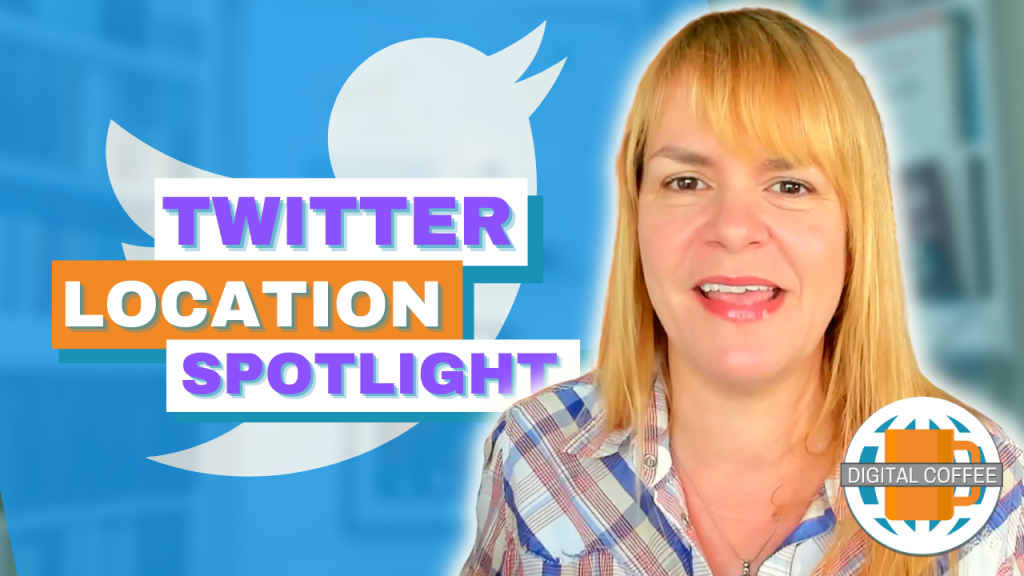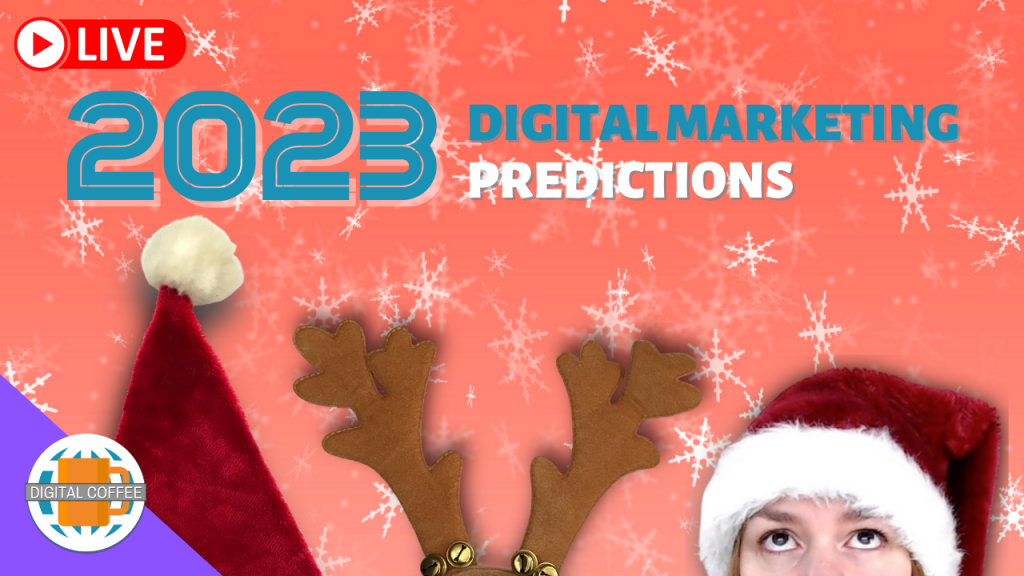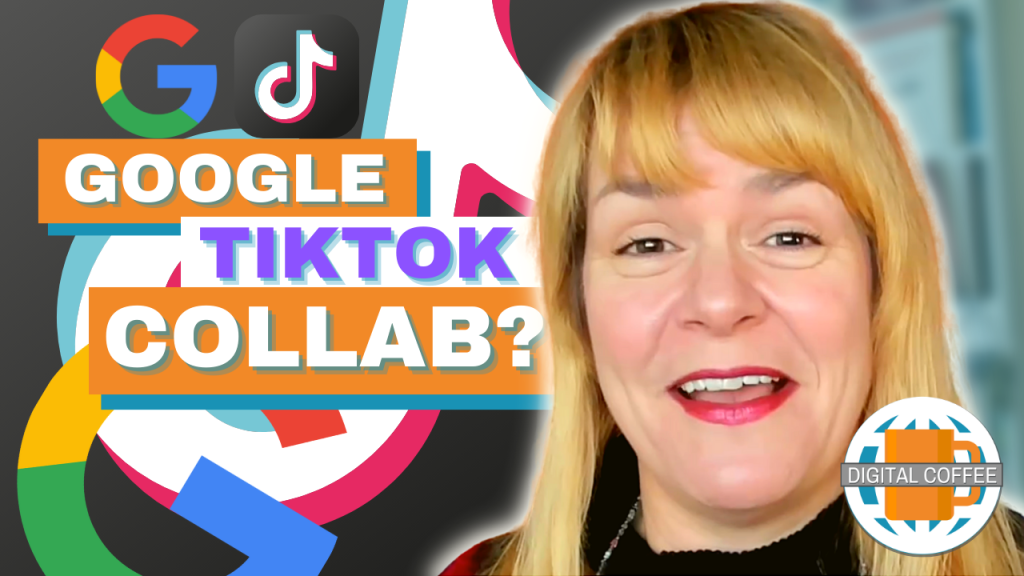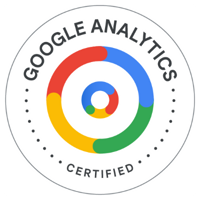
How can you create ads for your business that capture your audience at each stage of the customer journey? Are you pushing ads to an interest-based audience and forgetting about what happens next?
Are you losing the people who engage with your Facebook ads before they buy? Today’s expert interview with Tony Christensen shows you how you can build an ads sequence that continues to get sales long after the first ad is served.
Before that, we’re going to talk Facebook video statistics and look at a superpower that makes creating and editing captioned video from your phone simple.
Click below to listen.
Podcast: Play in new window | Download
Subscribe: Apple Podcasts | RSS
Join the club
Be sure to subscribe to The Digital Marketing Superhero Club by email to get notified when the full tutorials go live.
Join the Facebook group to mingle with other Superheroes.
Superhero Tips – Measuring Facebook Video Success (Or Failure)
Did you know that a Facebook video view is counted when someone watches 3 seconds or more of your video? 3 seconds, that’s nothing, it’s barely time to say your name. How do we find out if people are watching our videos for longer?
I’ve been running a 30-day video challenge with members of the Digital Marketing Superheroes Facebook Group.
The goal of the challenge was to increase our reach and engagement on Facebook.
It’s easy to see the results. Your Facebook pages app will show you the headlines at the top of the page, you can delve further into these in your page insights.
These stats tell me that I’ve seen a 94% increase in reach over the period and a 54% increase in engagement. So it worked for me. Yay!
But how do I find out more? How do I know if my videos are getting watched? How do I know which ones people liked best?
Let’s start with…
Negative feedback
One of the concerns about doing a challenge like this is that your followers could tire of seeing so much content from you in the feed.
My thoughts were that so few people saw your content due to the algorithm and that the algorithm was engineered to show your posts to people who’d like them, so people wouldn’t be annoyed.
Boy was I wrong. You can see negative feedback in your insights tab on your Facebook page.
Click posts on the right-hand side and then at the top of the screen, next to reach and engagement click the drop down and select ‘hides of posts, hides of all posts, page unlikes, reports of spam’ to see how you fared.
Click here to see a more detailed tutorial.
Over the first week of the challenge, I was receiving more negative feedback than previously. This settled down after the first week. I figure Facebook was getting better at knowing what to show people.
Duration watched
This was the statistic that made Social media examiner turn their back on long-form Facebook video. It’s not easy to find how long people watched your organic (not advertised) videos. You need to download a report.
From your Facebook insights page click on ‘Export Data’ on the top right-hand side, select ‘video data’.

You’ll get the report as an Excel file. It will show you
From this report, you’ll be able to see 30-second and views to 95%.
This is an interesting report not just to discover how few people are watching to the end but also to discover which of your videos are working best on Facebook.
If you can see a trend here it can inform what content you want to see in the future.
Engagement rate
What I love about engagement rate is even if your video didn’t reach a tonne of people you’ll get a good idea if it resonated with those it did reach.
Because my reach almost doubled over the 30 day period of the challenge and my engagements only rose by 50% my engagement rate was down. Remember the formula for engagement rate is engagements divided by reach x 100.
Here’s a tutorial on how to find your Facebook engagement rate.
Like the duration watched statistic this will give you an idea of the type of content your audience wants to see more of.
Superpower of the week – Apple Clips
Apologies Android users this week’s superpower is just for iOS users but it’s so cool I had to give it a mention.
It’s an app I’ve had on my phone ever since it was launched but it’ only recently I’ve realised it’s full potential.
Apple Clips auto-captions your videos as you speak. It’s not 100% accurate but you can edit any mistakes away. You have to record directly into clips to make it happen but luckily it has lots of in-built editing tools that make that less of a problem than you’d expect.
You can record multiple clips in one project, top and tail them, add filters, stickers and title cards from the library.
It’s so simple to use and within minutes you could have fully edited, fully captioned video,
I love it!
Oh, best of all it’s free. Go get it and try it out.
Superhero Interview – Tony Christensen
Tony is a self-proclaimed, “marketing nerd” who is obsessed with Facebook & Instagram advertising. Currently, he runs his own marketing agency; Tony Does Ads. Additionally, he works for the Mobius Media Solutions team to help out on bigger client campaigns.
Christensen has created and optimised advertising campaigns for keynote speakers, conferences, and business owners with budgets as high as the millions a month in advertising spend.
He loves to take a data-driven approach with marketing campaigns and works to ensure they stay aligned with business goals.
In his free time, he creates advertising tips on his YouTube channel and travels. He loves connecting with people on Twitter, spreading positivity (usually through sarcasm) and empowering people to go after their biggest dreams…life is too short not to!
Amanda Webb:
Today’s super hero is Tony Christensen from Tony does ads. Welcome to the podcast, Tony.
Tony Christensen:
Thank you for having me. Great to be here.
Amanda Webb:
And tell me, I meet a lot of people, I’m kind of a little bit in love with Facebook ads. I meet a lot of people that are loving well up with Facebook ads. I’m imagining you’re one of those people, otherwise that’s not what you would call yourself.
Tony Christensen:
Yes. I’d say I probably have a love/hate relationship with Facebook ads, but I typically love Facebook ads.
Amanda Webb:
I have been see to throw things at my computer when it’s being a little bit glitchy, but generally I quite love it. Where did that come from? How did you start?
Tony Christensen:
I guess it started back in years ago now when I kind of was doing music and trying to promote that and really kind of got into marketing from there. I kind of had an IT background with data analysis type stuff and decided that was not the path I wanted to go and really was starting to promote my music and figuring out how to get that out to more people. And I kind of started diving into Facebook ads and ended up falling in love with it.
Amanda Webb:
So you’re here today to talk about a campaign that you’ve been running. Because you work with another company as well and you’ve been running it with them. So tell me first what sort of client was it and what was the goal of the campaign.
Tony Christensen:
Yeah, so the agency is called Mobius Media Solutions and they work with a lot of veteran owned businesses and a lot of them are e-commerce companies. Most of them have Shopify stores. So most of the main goal for most business is let’s get more sales and that’s exactly what their goal is. Now the client that we’re talking about today is a company that makes yoga pants, of all things, as well as tee shirts and other, they call them booty bands, like little elastic bands that people use to kick their legs out and things like that as well.
Amanda Webb:
Okay. Cool. I had no idea there was such a thing.
Tony Christensen:
Yeah.
Amanda Webb:
And I suppose the big problem we have usually, you’ve probably experienced it yourself, is when someone’s got a product and they come to you, it’s like run a product for my ads and that’s obviously the best way to run Facebook ads and you ran a sequence of ads.
Tony Christensen:
Yeah.
Amanda Webb:
So tell me about that. How did you construct that?
Tony Christensen:
A lot of our ad sequences that we do, they’re pretty much how Facebook kind of wants you to do ads. In a lot of ways if you go into creating your campaigns you can see awareness consideration and conversion in there, so the ACC funnel. So a lot of our ads were kind of running just like that, so the top of the funnel’s more engagement campaigns where you’re just kind of giving people value, most of those are video ads for video views. The middle of the funnel-
Amanda Webb:
I’m sorry, before you go on to the middle then, what sort of video would you put up there? Is it something about the product or is it just kind of a fun thing, or?
Tony Christensen:
This is where it gets really fun and it kind of depends on the client too. We’ve had some bigger clients that have had viral videos and then we’ll pull people, audiences from video views there and we’ll show them other comedy related videos. For this specific yoga pant client, we’re doing a lot of testimonials. Why people love their yoga pants, for example. What makes them different at the top of the funnel.
Amanda Webb:
Mm-hmm (affirmative).
Tony Christensen:
And then, I don’t know if you want to go, me to go down-
Amanda Webb:
Yeah. Let’s go down to the next level now, yeah.
Tony Christensen:
Yeah. And then I don’t know if you want me to go in to targeting too-
Amanda Webb:
Yeah. Absolutely.
'If you have a purchaser list that's going to be usually way more valuable than let's say an email list or an engagement audience, you know. As close as you can get to that source of who your customer is the better it's going to perform.'Click To TweetTony Christensen:
Yeah. So I like the targeting too and how we sequence that because I think it’s really valuable. What we do, and it kind of depends too on how many people are going to your website and your engagement on all your platforms and all that. But what we’re doing currently for them that’s working fairly well is we’re doing a 1% look alike audience of their purchasers basically. So you know the closer you can get to the people that are buying for that look alike audience, so if you have a purchaser list that’s going to be usually way more valuable than let’s say an email list or an engagement audience, you know. As close as you can get to that source of who your customer is the better it’s going to perform really.
Amanda Webb:
And that’s really smart going for the purchases obviously because we think about creating lookalikes and it’s usually just random website visitors. And I’ll ask you a question before we move on to the next phase that I’ve asked everyone that’s talked about ads, which is, because this is just my personal little thing, so nobody needs to listen to this, by the way. Which is when you create a look alike audience, are you adding additional targeting to that or are you just leaving it as it is?
Tony Christensen:
I am doing both, depending on the case. I do so much testing, to be honest. So we have made some look alike audiences that are just really big, like they’re a few hundred million people and then we’re going to make that a little bit more narrow. So yeah, then we would dial that in and do more interspace audiences maybe or there’s so many different ways.
Amanda Webb:
It’s interesting because I usually don’t but I live in Ireland, we’ve got this tiny population so it usually from Ireland or the U.K and it’s 1%. I can tell you, it’s 29,000 people for 1% look alike audience and if I add targeting it just gets too small.
Tony Christensen:
Yeah. And that’s always the fun thing. It’s all kind of like a big puzzle, you know. In your case, when you’re doing a lookalike it’s going to probably be a lot different than mine but it’s also going to be different between the clients that we’re working with too and what kind of traffic they have. And if I’m targeting the U.S or the whole world or-
Amanda Webb:
So what you’re saying is it depends.
Tony Christensen:
Yeah. That’s my answer for most things. It depends and test is like my two biggest you know.
Amanda Webb:
Okay. They’re good things to say, I think. Okay. Right. So we’ve got our top of the funnel where we’re targeting the look alike audience. We’re showing the a video of testimonials. Next phase is-
Tony Christensen:
Yeah. So our next phase right now, I’m trying to think what it is off the top of my head. So right now we’re actually running image ads of all things. I love videos more but we just … so some more back story, with this client we kind of … they’ll create the creative on their end. They have a creative team. And they’ll kind of update us every two weeks or three weeks or so with new creative and images.
So currently right now we have this new merch that came out so it’s shirts and new yoga pants which makes it really nice because we can show the same audience stuff and they can still burn out but they’re still kind of fresh content that they’re seeing. New products. So we’re kind of showing them image ads of … and we split them up too.
So they’ll have like a girl posing in a shirt on the left and then maybe another shirt or yoga pants or something on the right. It’s just an image ad and those are targeting right now we have engagers. So that’s kind of pulling from that awareness audience and then goes and engages with the website and website visitors or engages with the Facebook page, the Instagram page or even does a video view. And we might target that for like ten second views or a percentage or what not. So you’re bringing down more and more audiences as you keep going down the funnel.
Amanda Webb:
Right. And would people be buying at that phase? Are you getting sales at that phase? Are you getting sales actually at the first level of the funnel, is the question.
'Top of funnel right we're getting a little over a 5 x return on ad spend. And the middle of funnel we're getting a 7.76 x return on ad spend.'Click To TweetTony Christensen:
Yeah. We are getting sales everywhere right now, which is great. This is what you want to happen. I can pull up right now … so the top of funnel right now we’re getting a little over a 5 x return on ad spend. And the middle of funnel currently, it looks like we’re getting a 7.76 x return on ad spend. So they’re doing pretty well.
Amanda Webb:
Right. So that’s our first phase. And is the third phase then the bottom of your funnel?
Tony Christensen:
The third phase, and I love doing these now, the dynamic product ads. And this is great for a lot of our clients that are e-commerce. So basically you can sync up your product catalog from Shopify or woo-commerce to your Facebook catalog there and you can basically have that refresh and pull from Shopify so if you add new products they’re still getting included.
And we’re basically, if you’re going and you clicked on that middle of funnel shirt ad or whatever and you go and you look at that shirt, maybe you add it to your cart or you just looked at it and then you left, but you didn’t buy, basically that bottom of funnel will be a dynamic product ad so you’re going to see that same shirt or whatever you were looking at again for that bottom of funnel conversion campaign.
Amanda Webb:
And just explain for the people that haven’t made these sorts of ads what those dynamic ads look like.
Tony Christensen:
They basically look like … yeah, and I love explaining this and sometimes people are like wait, what do you do with ads and this is kind of like what I tell them. I’m like, you know when you go to a website and you’re looking at a product and then you go to
Facebook and that product kind of hits you in the face again, you’re like wait, what happened here? So yeah, that’s what a dynamic product ad is and they’re kind of like carousel ads, the ones that we’re running right now. So you can see, maybe if you’re looking at multiple products, you’ll see the one that maybe you looked at longest and then if you scroll to the right maybe it will be another color or another product that’s similar to that same product that you were looking at.
Amanda Webb:
Okay.
Tony Christensen:
It kind of goes along with just the idea of you need, I think they say seven to eight touches that people need to see your product or your brand again from a cold audience or something until they buy so you’re just kind of putting that in front of their face one more time or multiple times after that to then get then to hopefully buy.
Amanda Webb:
Okay. And for that, you’re targeting just people who’ve been and looked at stuff on the site.
Tony Christensen:
Yeah.
Amanda Webb:
And you’re retargeting with the same product. That’s how dynamic works, right?
Tony Christensen:
Yep. And then you can also test. So we did some tests too on the different time frames. You can do, right when you look at it the next three days or something we might target you then and then we might test after three days from three to seven days or something like that. Again, like I said-
Amanda Webb:
That would be my next question. Would be how long do you harass them for? Some businesses never let go. It’s like a year later, you’ve actually, more than one company I could name and a year after I looked at their page once, they’re still targeting me.
Tony Christensen:
You’re like why do I keep seeing your stuff? Quit targeting me. We do a lot of testing but we typically, I mean, I’m looking at it right now and we’re not going outside of seven days, so we’re not really harassing you that much. But we might, you know if we get a new product down the line, a new colour of pants or a new product, that’s totally different.
We might show those again to people that have engaged with us the last, that can all depend too from thirty days to sixty days or something like that or even longer. We typically don’t like harassing people and showing them the same ad. We try to test a lot of different creative and show them different copies and different products if we can.
Amanda Webb:
Okay. If you were talking to a small business owner that’s done a bit of dabbling with Facebook ads but nothing else and they wanted to create something like this, where do they start? What do they need?
Tony Christensen:
I’ve actually had a lot of people reach out to me more recently. I’ve really been building my personal brand after seeing you at Marketing World and at Atomicon and you get a lot of people reaching out and saying where do I start, what should I do. And the first thing I tell everyone this, I say, is your Facebook pixel installed? I always start there. Because I’d get that installed if it’s not on your site right now because you’re going to be basically missing those audiences of those website visitors-
Amanda Webb:
Mm-hmm (affirmative).
Tony Christensen:
And again it’s one of those it depends and test kind of answers so it kind of depends on how many people are going to your website currently. But that might be a place that I might start suggesting to people. For example, I was working with a vegan cookie dough lady that sold vegan cookie dough-
Amanda Webb:
You’re interested in all the healthy companies, aren’t you?
Tony Christensen:
Yeah.
Amanda Webb:
Yoga, vegan cookie dough.
Tony Christensen:
So she had 20,000 followers on her Instagram, a lot of engagement there. Quite a bit of people starting to buy and she kind of wanted to start getting in to ads and right there, if you have that much engagement going on, you have a pretty good engaged community, then I would start just with those remarketing campaigns. So it could be a dynamic product ad for those people that looked at your product and didn’t buy that are in that community. Or it could just be more of a, kind of like the ads that you see a lot of people make when they’re starting Facebook ads where you are targeting a conversion ad, but not targeting that interest. It’s more of people that are engaging with you, you know.
Amanda Webb:
When you got in touch you were saying you have loads of tips, so if you have any last tips you’d like to share with us before we go-
Tony Christensen:
I’ve got so many.
Amanda Webb:
Just list them all.
Tony Christensen:
So one of the cool ones I took away from social media marketing world and I’ve done it on my YouTube video thumb nails is just add more contrast to your photos-
Amanda Webb:
All right.
Tony Christensen:
It’s going to make your images pop a little bit more on the newsfeed. Another cool tip, and it’s again test all this stuff because I could say it but for your business or your specific example or your creative it might now work at all so always be testing, another tip too, most people’s videos and photos are in colour, so maybe try grey scale to just stick out a little bit more. Kind of in a weird, reverse way of doing it.
Amanda Webb:
Yeah.
Tony Christensen:
I’m just shooting off like a bunch of tips. I wrote some down for you so I have them right away. Some other ones too, video now and I just met with Facebook last week with the team and they said they’re going to go to pretty much strictly vertical and square video formats for ads-
Amanda Webb:
Mm-hmm (affirmative).
Tony Christensen:
So you definitely want to be going that direction with a lot of your creative now-
Amanda Webb:
Okay.
Tony Christensen:
Again that’s typically taking up more room on people’s phones anyway than horizontal videos but a lot of people like those horizontal videos because that’s the way it’s always been done.
Amanda Webb:
Yeah.
Tony Christensen:
But people are … I’m doing a lot of Google data studio kind of dash boards and things now and I always pull up the breakdown of phone versus tablets versus desk top people and I’m seeing like 80 to 90% of most traffic and purchases now is on mobile phones and it’s kind of a surprisingly high number to me and again it depends on businesses and everything but really focus on that mobile performance and how it looks there and that’s why they’re kind of going to that square in video, vertical sorry-
Amanda Webb:
The nice thing about doing vertical as well is you don’t need to have to create something different for Instagram stories placement.
Tony Christensen:
Yeah, exactly. And that’s a good, nice cheap area to advertise.
Amanda Webb:
At the moment, yes.
Tony Christensen:
Yeah, at the moment. Until a few months and then they’ll jack up the prices but-
Amanda Webb:
Yeah.
Tony Christensen:
Yeah, that’s kind of why they’re doing that too because they want people to basically hit the … you know, don’t edit your placements, do the automatic and if you’re doing the square then it’s going to be fine on Instagram and it’s not going to be cut off or you’re not going to have to worry about all that, so it’s kind of why they’re going that direction just to make it easier in the future for everyone.
So another cool one that I just started doing and we’ve seen some pretty good results, and it’s a pretty basic tip and I hate doing it for Instagram because I hate when people … when I see it, but basically adding the actual URL links to your copy and like I said, I hate seeing it when people have their URL that you can’t click on Instagram so you might want to separate your placement there, but we’ve seen some pretty good results with just having that, you know if you’re running a conversion campaign and you’re sending them to a certain URL just putting that URL in the actual text of the ad-
Amanda Webb:
Right. Yeah.
Tony Christensen:
Again it’s an easy place for someone to click really quickly and they can see it and-
Amanda Webb:
Yeah. I think some people don’t know that they can click. I know it sounds silly to those of us that use social media all the time, but some people don’t know. Okay. That’s an interesting one.
Tony Christensen:
Yeah and then I also say to test different lengths of your audiences and like when I was talking about website visitors and again this comes down to how much your traffic is and what that audience size is, but you can test different website lengths of visitors.
So someone that visited in the last day, in the last three days, seven days, fifteen days, thirty days, whatever you want to do. But I would just say kind of test that. Most of the time we see the closer audience performs the best because your brand is right there, fresh in their mind. But it’s definitely something where you want to test it out just to see how it performs in those different audiences.
You want another tip? I can just keep going.
Amanda Webb:
Go on, give me one more. Give me one more. I just realised we’re going to run quite long.
Tony Christensen:
No worries, I’m sorry.
Amanda Webb:
They are all good tips, though, I don’t want to say no. I’m writing them down-
Tony Christensen:
Yeah, you’re like I got this. So I love this, it’s great for e-commerce, especially subscription. People that have … we were working with some coffee companies where people could sign up for a new bag every month and basically it’s a similar idea to old traditional marketing where we had, like an example, I went and got my oil changed three months ago or whatever and then a few weeks ago I got a little postcard and it was a little coupon for hey, come back and get your oil changed. Here’s a certain percentage off. So running ads like that, where you’re retargeting people-
Amanda Webb:
Oh, yeah.
Tony Christensen:
A month later or sixty days later, or something and you’re saying, hey come back. Would love to see you or maybe we have new product or are you empty with your coffee or something and then hitting them with another ad there. Is a pretty nice little reminder. As well as you can do things like birthday campaigns too, like happy birthday, here’s 10% off-
Amanda Webb:
Yeah. I only just recently found out like I’ve been doing ads for a ridiculously long time that you could target people who have birthdays coming up so that’s kind of cool too.
Tony Christensen:
Yeah. Yeah. It’s fun. I love just really diving in and trying all these different things. And it’s awesome to talk with different advertisers because they all have something that might be working for them and I love just kind of going and trying to pick the little things that people are doing and testing it on my own and seeing what works.
Amanda Webb:
Thanks for joining us, Tony. You really are a super hero. Welcome to the club.
Find Tony Online
Get FREE ACCESS to Analytics Day 2024 - 11th June 2024









